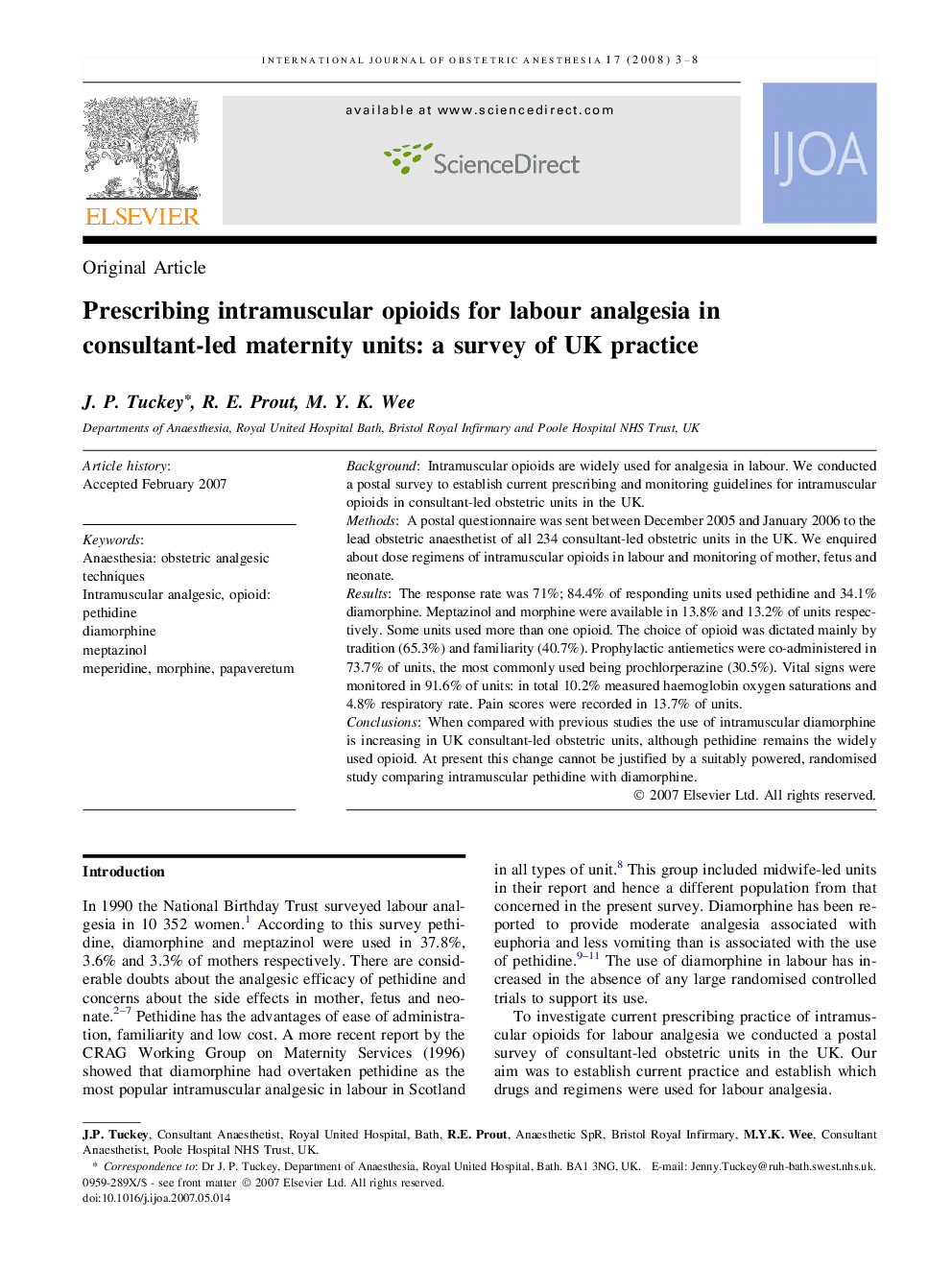| Article ID | Journal | Published Year | Pages | File Type |
|---|---|---|---|---|
| 2758079 | International Journal of Obstetric Anesthesia | 2008 | 6 Pages |
BackgroundIntramuscular opioids are widely used for analgesia in labour. We conducted a postal survey to establish current prescribing and monitoring guidelines for intramuscular opioids in consultant-led obstetric units in the UK.MethodsA postal questionnaire was sent between December 2005 and January 2006 to the lead obstetric anaesthetist of all 234 consultant-led obstetric units in the UK. We enquired about dose regimens of intramuscular opioids in labour and monitoring of mother, fetus and neonate.ResultsThe response rate was 71%; 84.4% of responding units used pethidine and 34.1% diamorphine. Meptazinol and morphine were available in 13.8% and 13.2% of units respectively. Some units used more than one opioid. The choice of opioid was dictated mainly by tradition (65.3%) and familiarity (40.7%). Prophylactic antiemetics were co-administered in 73.7% of units, the most commonly used being prochlorperazine (30.5%). Vital signs were monitored in 91.6% of units: in total 10.2% measured haemoglobin oxygen saturations and 4.8% respiratory rate. Pain scores were recorded in 13.7% of units.ConclusionsWhen compared with previous studies the use of intramuscular diamorphine is increasing in UK consultant-led obstetric units, although pethidine remains the widely used opioid. At present this change cannot be justified by a suitably powered, randomised study comparing intramuscular pethidine with diamorphine.
